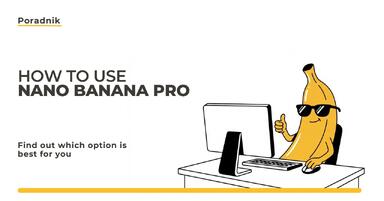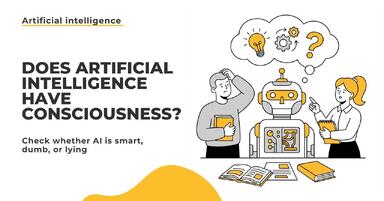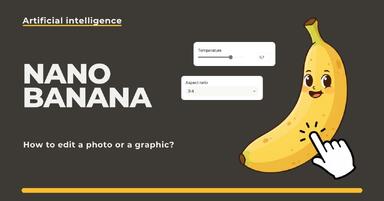Publication date: 19-04-2025 | Update date: 17-04-2025 | Author: Piotr Kurpiewski
Homestaging in 60 seconds! GPT revolutionizes real estate and interior presentations
GPT-4o enables instant virtual furnishing of empty interiors, significantly facilitating the presentation of real estate in advertisements and sales materials. All it takes is one photo and a few prompts for artificial intelligence to create a realistic arrangement ready to show to the client. This tool is particularly useful for agents and investors in the real estate market, as well as for non-industry individuals who simply want to see how their apartment could look like. AI can surprise with its quality, but one must remember its limitations - sometimes it alters the proportions of the room or „hallucinates” details. Nevertheless, GPT-4o is already finding real application in homestaging.
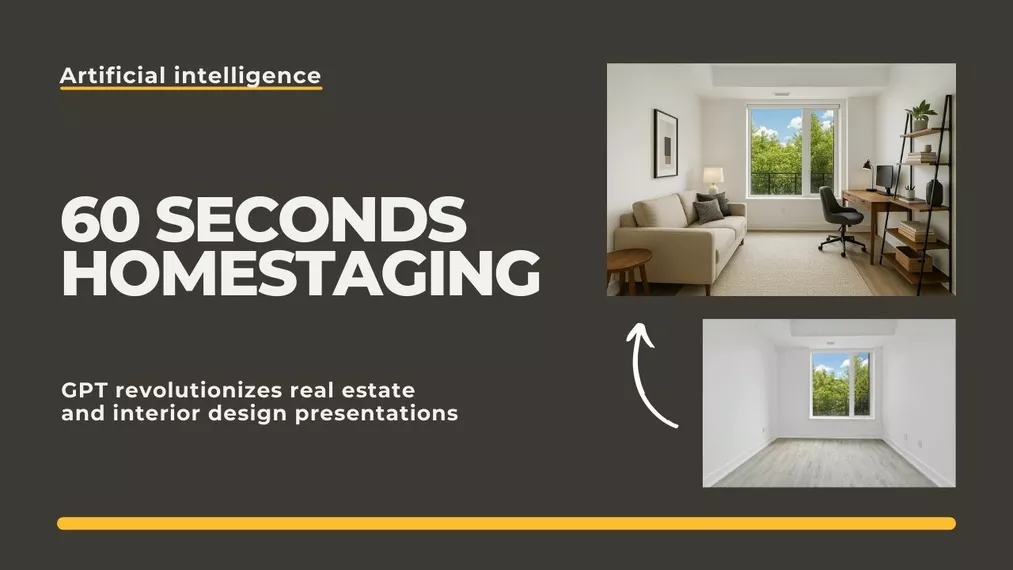
First impressions matter in real estate sales. An empty apartment, even with a great layout, often fails to capture the client's imagination. After all, not everyone can envision how a given interior will look after being furnished. This is where GPT-4o - the new Chata GPT model comes to the rescue, capable of transforming a photo of an empty space into a virtually furnished area in just a few seconds.
This is a real revolution for real estate agents, developers, and homeowners. In this article, we will show how AI homestaging works, where it performs best, and its limitations to keep in mind.
Why does homestaging work - even if it's only digital?
Homestaging involves preparing an interior to look attractive, functional, and cozy - often using neutral, timeless solutions. Sales psychology clearly shows that properly arranged space allows the buyer to make a decision more quickly. It's not about showing real furnishings, but suggesting the potential of the space.
Until now, digital homestaging required the use of graphic programs, rendering, or cooperation with a graphic designer. GPT-4o changes the game - it allows you to do the same, faster and cheaper, without specialized knowledge.
How to furnish empty spaces with GPT-4o?
The process is simple: you upload a photo of the empty room and enter an appropriate prompt, for example:
"In this empty room, I want to set up an office with a comfortable sofa and a desk with a chair in a modern, but friendly style. Natural light, bright colors."
GPT analyzes the layout of the room and generates a new image - furnished, stylistically consistent, and ready to show potential clients. You can request different variants - for example, in a loft, Scandinavian, or boho style - and choose the one that best fits the buyer's profile.

Even simple prompts yield impressive results, but to achieve a better effect, it's worth structuring them to clearly answer the following questions:
- Goal - what do you want to achieve?
- Restrictions - what cannot be changed?
- Visual narrative - what do you want to convey to the recipient?
- Details - what details are crucial?
- Bright, even light - it's best to take a photo in daylight, without deep shadows.
- Straightforward composition - two walls and the floor, without perspective distortions, work best.
- No distractions - the room should be truly empty and clean, without cluttering objects.
- Neutral color scheme - light walls and floor better suit most stylizations.
Before and after - how does AI change the perception of space?
The biggest strength of AI in homestaging is showing contrast, i.e., how the perception of an empty space changes after adding furniture, light, and details. The space seems larger, more functional, and, most importantly, ready to move in.
Thanks to GPT, you can prepare such visualizations literally in a minute, without a photo shoot, furniture transportation, or editing in graphic programs. A good photo and a few description sentences are enough to achieve a "wow" effect.
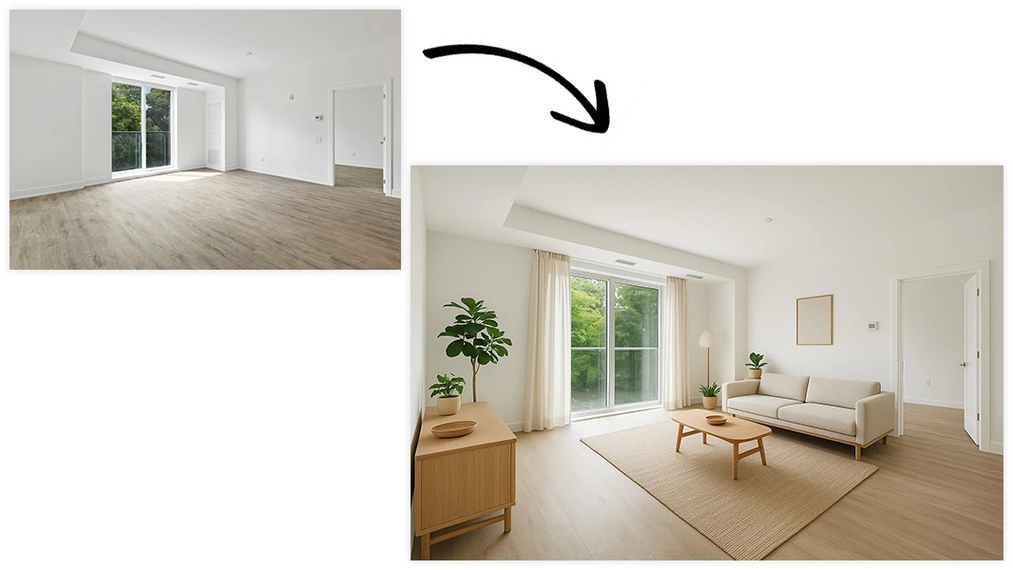
Limitations of GPT-4o in the context of homestaging
Although GPT-4o makes a huge impression, it's important to know that it's not a perfect tool. Sometimes, the AI "hallucinates" - adding elements that don't exist, changing the proportions of the room, or moving windows or doors. Sometimes, the generated images are aesthetic but unrealistic in terms of functionality.
Therefore, in more demanding cases - for example, with premium properties - it's worth treating this type of homestaging as a supplement, not the only source of visualization. Nevertheless, for secondary market apartments, investment properties requiring renovation, or rental properties, GPT-4o is already an effective tool supporting sales.
How to prepare a photo for staging with AI?
The better-prepared the input photo, the greater the chance of a realistic and consistent end result. Here are a few simple principles:
Why is it worth considering this?
Homestaging with GPT-4o is a fast, spectacular, and cost-effective solution where speed and aesthetics matter. It helps increase the attractiveness of the offer in advertisements, raise the perceived value of the apartment, and speed up sales. Furthermore, it doesn't require specialized skills, and you can achieve the first effects literally in a few minutes. It's also a great solution for those considering renovating their own apartment.
It's not the end of traditional staging, but its digital extension - available to everyone, regardless of the property's budget or location.
Is AI the future of the real estate market?
AI won't replace the human eye, experience, and market knowledge - but right now, it is a real support in the sales process. Tools like GPT-4o allow for better presenting properties, especially in situations where physical staging isn't possible or cost-effective.
It's not just an experiment - it's technology that is changing standards. The question is no longer "is it worth using?" but rather "can you afford not to use it?"
And if you want to learn more about the applications of AI in architecture and interior presentation, check out our courses in the artificial intelligence category, where you'll find specific tools and practical examples of using this technology in practice.
Przeczytaj o programie AI - Artificial Intelligence na naszym blogu
-
![How to use Nano Banana Pro and how much does it cost? A practical guide for beginners]()
How to use Nano Banana Pro and how much does it cost? A practical guide for beginners
Learn how to use Nano Banana Pro for free via Gemini, when it’s worth paying, and which solution will be best for you! -
![Artificial intelligence - AI - for furniture manufacturers - see what possibilities it offers!]()
Artificial intelligence - AI - for furniture manufacturers - see what possibilities it offers!
Discover the AI tools and workflows that enable creating packshots, material variants, and interior arrangements: in practice, step by step. -
![Does artificial intelligence have consciousness? We check whether AI is smart, stupid, and whether it lies]()
Does artificial intelligence have consciousness? We check whether AI is smart, stupid, and whether it lies
Is AI conscious? Does it lie or tell the truth? We answer the most common questions about artificial intelligence without myths and ambiguities! -
![Nano Banana - How to edit a photo or graphic?]()
Nano Banana - How to edit a photo or graphic?
Learn step by step how to use Nano Banana to edit realistic visualizations faster using artificial intelligence.
